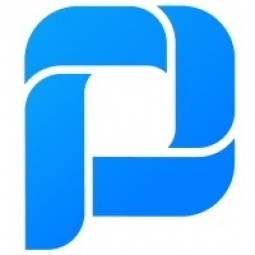公司规模
Large Corporate
地区
- Africa
- Europe
国家
- Nigeria
- United Kingdom
- Ghana
- Kenya
- Tanzania
产品
- ProcessMaker workflow platform
技术栈
- Swift Financial Messaging Service
实施规模
- Enterprise-wide Deployment
影响指标
- Productivity Improvements
- Customer Satisfaction
技术
- 应用基础设施与中间件 - 数据交换与集成
适用行业
- 金融与保险
适用功能
- 商业运营
用例
- 过程控制与优化
服务
- 系统集成
关于客户
Guaranty Trust Bank plc 是一家国际银行,业务范围遍布英语和法语西非、东非和欧洲。该银行目前拥有超过 3.287 万亿奈拉的资产基础,在尼日利亚、科特迪瓦、冈比亚、加纳、利比里亚、肯尼亚、卢旺达、乌干达、塞拉利昂、坦桑尼亚和英国拥有超过 10,000 名专业人员。该银行成立于 1990 年,自成立以来,始终如一地提供创新的金融解决方案和卓越的客户体验,使其客户群和关键财务指标逐年增长。GTBank 认识到需要满足不断增长的客户需求,因此采用了 ProcessMaker 作为企业解决方案。该银行因其对“橙色规则”或八项卓越原则的奉献而受到赞誉,这些原则推动了银行的品牌和客户体验战略的发展。作为一家优先考虑创新、专业性和成果的机构,GTBank 认识到需要采用新技术来更好地履行其使命。
挑战
在实施 ProcessMaker 之前,GTBank 的内部业务流程运行在过时的管理套件上。以前的供应商的产品架构和单点解决方案无法为客户提供银行所需的定制化和可扩展性。以前系统成本的上升越来越难以证明其合理性。GTBank 需要在公司设立一个中央处理部门来处理人口变化和维护等任务。最初,这种情况发生在各个分支机构。部门孤岛和沟通滞后成为负面影响,导致跨协作效率低下。GTBank 还希望将该系统用于外汇交易,即涉及资金进出该国的交易。具体来说,它需要将 ProcessMaker 与 Swift 金融消息服务集成。该服务生成电传消息,在汇款完成时通知银行。然后,这些请求将在 ProcessMaker 系统中接收和批准,然后才开始转账。
解决方案
GTBank 需要一个强大的解决方案,能够在一个平台上简化其所有分支机构和流程。该解决方案所需的复杂性、定制和功能数量非常庞大。由于 ProcessMaker 平台直观、非技术人员易于使用且功能全面,GTBank 能够使用 ProcessMaker 满足所有运营需求。如今,任何不涉及中央处理或国外转账的业务部门都使用 ProcessMaker 实现流程自动化。所有操作都可以在 ProcessMaker 平台上实现自动化、转移、分配和完成。通过更快地处理大量案件,该银行始终如一地履行其在银行解决方案方面追求卓越的承诺。GTBank 开始使用 ProcessMaker 后,该平台迅速成为银行使用最多的应用程序。该金融机构有 7,500 名用户通过该系统处理 20,000 个案件,六年内完成了超过 400 万个案件,即每月超过 150,000 个。ProcessMaker 重新定义了 GTBank 的运营方式,为其提供了更好地服务客户和扩展业务所需的工具。
运营影响
数量效益

Case Study missing?
Start adding your own!
Register with your work email and create a new case study profile for your business.
相关案例.

Case Study
Real-time In-vehicle Monitoring
The telematic solution provides this vital premium-adjusting information. The solution also helps detect and deter vehicle or trailer theft – as soon as a theft occurs, monitoring personnel can alert the appropriate authorities, providing an exact location.“With more and more insurance companies and major fleet operators interested in monitoring driver behaviour on the grounds of road safety, efficient logistics and costs, the market for this type of device and associated e-business services is growing rapidly within Italy and the rest of Europe,” says Franco.“The insurance companies are especially interested in the pay-per-use and pay-as-you-drive applications while other organisations employ the technology for road user charging.”“One million vehicles in Italy currently carry such devices and forecasts indicate that the European market will increase tenfold by 2014.However, for our technology to work effectively, we needed a highly reliable wireless data network to carry the information between the vehicles and monitoring stations.”

Case Study
Safety First with Folksam
The competitiveness of the car insurance market is driving UBI growth as a means for insurance companies to differentiate their customer propositions as well as improving operational efficiency. An insurance model - usage-based insurance ("UBI") - offers possibilities for insurers to do more efficient market segmentation and accurate risk assessment and pricing. Insurers require an IoT solution for the purpose of data collection and performance analysis

Case Study
Smooth Transition to Energy Savings
The building was equipped with four end-of-life Trane water cooled chillers, located in the basement. Johnson Controls installed four York water cooled centrifugal chillers with unit mounted variable speed drives and a total installed cooling capacity of 6,8 MW. Each chiller has a capacity of 1,6 MW (variable to 1.9MW depending upon condenser water temperatures). Johnson Controls needed to design the equipment in such way that it would fit the dimensional constraints of the existing plant area and plant access route but also the specific performance requirements of the client. Morgan Stanley required the chiller plant to match the building load profile, turn down to match the low load requirement when needed and provide an improvement in the Energy Efficiency Ratio across the entire operating range. Other requirements were a reduction in the chiller noise level to improve the working environment in the plant room and a wide operating envelope coupled with intelligent controls to allow possible variation in both flow rate and temperature. The latter was needed to leverage increased capacity from a reduced number of machines during the different installation phases and allow future enhancement to a variable primary flow system.

Case Study
Automated Pallet Labeling Solution for SPR Packaging
SPR Packaging, an American supplier of packaging solutions, was in search of an automated pallet labeling solution that could meet their immediate and future needs. They aimed to equip their lines with automatic printer applicators, but also required a solution that could interface with their accounting software. The challenge was to find a system that could read a 2D code on pallets at the stretch wrapper, track the pallet, and flag any pallets with unread barcodes for inspection. The pallets could be single or double stacked, and the system needed to be able to differentiate between the two. SPR Packaging sought a system integrator with extensive experience in advanced printing and tracking solutions to provide a complete traceability system.

Case Study
Transforming insurance pricing while improving driver safety
The Internet of Things (IoT) is revolutionizing the car insurance industry on a scale not seen since the introduction of the car itself. For decades, premiums have been calculated using proxy-based risk assessment models and historical data. Today, a growing number of innovative companies such as Quebec-based Industrielle Alliance are moving to usage-based insurance (UBI) models, driven by the advancement of telematics technologies and smart tracking devices.
Case Study
Enhancing Security and Compliance in Remitly's Global Money Transfer Service with Fastly
Remitly, an online remittance service, was faced with the challenge of securing its proprietary global transfer network. The company needed a security solution that could meet PCI requirements and protect customers' sensitive transactions through its mobile application. The solution had to be capable of defending against new and emerging attack types without impacting performance. Remitly also had to deal with irregular traffic patterns, such as a sudden spike in account transfers from a small network segment on the Pacific coastline of South America. The company needed to determine in real time whether such traffic indicated an attack or valid requests. A traditional web application firewall (WAF) would not be able to distinguish this traffic, potentially leading to customer frustration if the IP was blacklisted.







